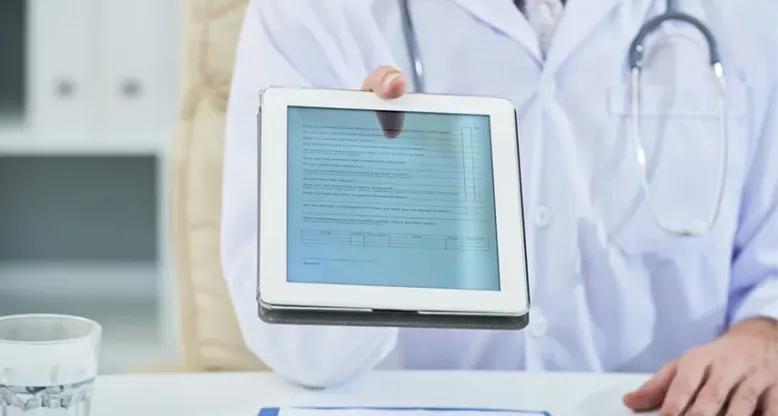What are the HIPAA Requirements for Electronic Claims?
The Health Insurance Portability and Accountability Act of 1996 (HIPAA) clearly outlines the guidelines for electronic transmission and claims in healthcare.
Federal law has implemented these national standards to protect people’s health information. No health information can be disclosed to any party without the patient’s express consent.
Because the healthcare industry is becoming more modern with the advancement of technology, HIPAA compliance has also evolved. With most modern systems at risk of security breaches, there must be separate standards for the safe storage and ethical distribution of digital information.
Understanding HIPAA and its Significance in Electronics Claim Processing
First, what is electronic claim processing?
In this modern digital world, most healthcare facilities have digitized their files. Such systems ease communication and collaboration. Patient records are much easier to pull up when needed. Furthermore, cabinets full of papers are wasteful, not to mention a fire hazard.
An electronic claim is completed using software and entirely without traditional paper records. Medical software, such as those powered with iSi Technology, is often used to ease this process. In some cases, medical claims are outsourced to a third party.
It doesn’t matter if the healthcare provider uses billing software or a third party for the medical claim as long as HIPAA standards are followed at every step.
What are the benefits of electronically submitting claims?
1. It Saves Time
Printing out forms and filling them out takes a lot of time. Hard copies must be filed meticulously within a cabinet to ensure that they will be found by any other medical personnel in the future. Maintaining mountains of files requires a lot of resources, and sifting through thousands of records is neither practical nor efficient.
With electronic claims, medical staff can simply pull up a patient’s records within a highly organized and digitized system.
2. Errors are Minimized
Robust software is designed to spot mistakes in data keeping, such as redundant filing or other such errors. This is in direct contrast to traditional printed record-keeping when one typo or misspelling can go unnoticed for a long time.
Within a digital system, it is incredibly easy to correct mistakes and take measures to avoid them in the future.
Accuracy is critical because error-free claims are much quicker to process, which brings us back to the advantage discussed previously.
3. It Saves Money and Resources for the Facility
Healthcare facilities can reduce the staff assigned to claims because medical billing software will streamline the process. Plus, there is no need to buy reams of paper and printer ink in bulk because their use would be greatly reduced. Postage expenses will be minimized as well.
Software may not be a cheap investment, but it is a one-time expense with periodic maintenance and upgrades. Its long-term benefits cannot be overstated.
Ensuring Compliance: Key HIPAA Requirements for Electronic Claim

The use of medical software and the processing of electronic claims streamline workflows across various departments in the healthcare industry. Of course, they are still covered by HIPAA regulations. Knowing the key HIPAA requirements will lead to success in HIPAA compliance.
Here, we explain the HIPAA requirements for electronic claims:
Patient Files Must Be Secure
HIPAA was created to secure sensitive patient information. To augment these regulations, some states have passed their own patient privacy laws that may be stricter than federal ones.
Patient information obtained by any medical facility must remain confidential within the company and cannot be passed on to other parties, such as insurers and other entities. The patient has a choice of whether they want to share the information or not.
What information is covered by HIPAA?
- All health-related details in the medical record (physical or mental)
- Billing history
- Insurance coverage information
- Conversations between patient and healthcare provider
These details are collectively referred to as protected health information (PHI). Of course, some general health details are noted in medical claims. But there are some gray areas, too, as some information may very well become a clear identifier for the patient.
According to the HIPAA Journal, personal information may not be protected if it is stored in a separate database from the one where the patient’s health details are stored. In this case, information recorded with medical software must comply with HIPAA standards.
Secure Computer Networks
It is a healthcare provider’s responsibility to use secure computer networks when handling patients’ health information. With systems connected to the internet, there are massive security risks, including having patients’ health information become public. This is why HIPAA requires that medical and healthcare companies secure their networks. They must install firewalls and use virus protection to keep hackers and other malicious parties at bay.
Email Encryption
Email notices are an integral part of electronic claims, which do away with traditional mail. HIPAA has guidelines on how to send emails to protect patients’ privacy. Healthcare staff must use generic topics for their email subject lines without any mention of health information. Messages must also have a clearly outlined warning at the bottom to indicate that the information in the email is confidential and must not be forwarded or shared with anyone.
HIPAA also requires military-grade 256-bit encryption for emails sent using open networks. This means that only recipients with the correct passcode can read the message.
Electronic Claims Transmission: HIPAA Standards and Guidelines

HIPAA also sets clear standards for the content of all electronic claims transmission. This is to prevent confusion for healthcare providers.
For example, standard medical codes must be used. The practice will eliminate the use of local codes, which are prone to duplication.
What entities does HIPAA apply to?
- Health plan – defined as an individual or group plan that pays the cost of medical care.
- Healthcare clearinghouse – a public or private organization that processes or facilitates health information received from another entity.
- Healthcare provider – an organization that provides preventive, diagnostic, therapeutic, rehabilitative, procedural activities, and other medical services.
HIPAA also provides standard content and formatting for processing electronic claims.
Conclusion
All healthcare providers must abide by HIPAA standards for electronic claims to maintain patient privacy. Healthcare organizations must only use technology that is HIPAA compliant and certified, and healthcare staff must be trained with HIPAA protocols.
The record-keeping system must be kept safe and secure. The right medical software, such as those by iSi Technology, can provide all these requirements.